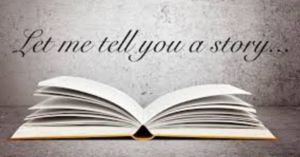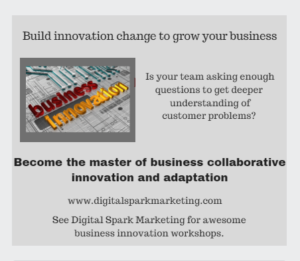Do you want to increase your marketing influence? What about your ability to effectively tell a story?

What exactly is influencer marketing?
According to Forbes, “Influencer marketing is a form of marketing that identifies and targets individuals with influence over potential buyers.”
Keep learning: 13 Remarkable Visual Content Marketing Examples
Influencer marketing is about providing product context and expertise through an inspirational person.
The importance of storytelling
Storytelling in presentations isn’t just a way to keep audience members entertained—although it does do that quite effectively.
However, storytelling is also a useful device for creating an empathetic audience that trusts you, a way to keep listeners engaged and absorbed by what you are saying and a motivating factor for action.
Check out these thoughts: Tips about creating a better story
Facts often can be boring and overwhelming, can’t they? Stories, though, not nearly as much. They are much easier to understand and much more entertaining.
Therefore they are much better at spreading ideas.
Change your life
Wonder if stories can change your life? They can if people believe they can. Facts are mostly non-relevant. What matters is what people think and believe.

Story/storytelling characteristics
Awesome stories and the storytelling used to tell them:
Are authentic, and people should never question this.
They make a promise that has some meaning to the community.
Are targeted to a particular community.
They make subtle points … and are not overwhelming.
They are a trusted marketing tool.
Stories and storytelling appeal to our senses and not to logic.
And most importantly they are told with a heart to appeal to emotions.
Storytelling skills matter
No matter what industry you work in, there’s a good chance you want your audience to leave understanding and supporting the ideas you just delivered.
Storytelling is a powerful way to grab attention, hold attention, and to change beliefs because it works in the same way that it does in our favorite books and movies:
Stories build suspense by introducing a hero, a challenge, a journey, and finally, a resolution that delivers the hero into an improved reality. (Didn’t we all read all seven books in the Harry Potter series because we had to see Harry and his cohorts overcome the evil of Voldemort?)
Stories cause chemical, physical, and emotional responses in listeners. When stories make people feel things like trust or kindness, the brain releases oxytocin, which motivates cooperation by enhancing empathy. This means that stories make people more likely to adopt new ideas and act based on those ideas.
First, tech giant Cisco Systems used to deliver fact-heavy presentations promoting their products. However, when they stopped listing features and started telling stories, they became much more effective and successful.
For instance, by telling the story of a small, struggling, local business owner who grew his company and managed it more effectively using Cisco, the company was able to humanize information about technology and make their benefits more relatable.
Next, Pastor John Ortberg of Menlo Park Presbyterian was masterfully able to move congregation members to believe in the message “people can bring the Kingdom of Heaven to this Earth by showing love.”
He did this by going beyond simply delivering relevant lines from Scripture, and telling a story about his little sister. She loved a ragged doll so wholeheartedly she was able to convince everyone in her life that the doll was beautiful and valuable.
While these two presenters were very different from one another, they had one thing in common: they both used stories to make their presentation resonate with the audience.

How to use storytelling to influence
You might be wondering how to craft an inspiring story when your most important content consists of data, insights, and numbers.
If you want to build your storytelling presentation skills, you should keep the following rules in mind:
Gripping Stories Have a Hero
The most beloved stories in history tell the story of a hero and his journey: Odysseus in the Odyssey, Simba in The Lion King, Luke Skywalker in Star Wars, and Harry Potter in his series et cetera. The hero’s journey is a beloved storytelling device that has a recognizable and easily digestible structure.
As marketing and storytelling expert Robert Rose explains, “the hero’s journey is a ‘monomyth’ — which is a pattern that many believe can be found in almost every narrative around the world” and that “storytelling across time shares a fundamental structure and can be summarized into this journey.”
Amy Purdy “Living Beyond Limits” Ted Talk
In her Ted Talk, pro snowboarder Amy Purdy talks about losing both of her legs to bacterial meningitis, re-learning to snowboard, then eventually medaling the Paralympics. It’s the quintessential example of the hero’s journey.
When you build your presentation’s story, position your audience as the hero. They are the ones who must cross the threshold and into an adventure; you are the one to dare and encourage them to slay the dragons that plague them and their business.
Finally, your ideas and the content of your presentation can guide them through their quest to reach a better resolution.
Tell a story … use contrast to build suspense
Effective use of contrast keeps people guessing at what’s next. Many of the most successful speeches have harnessed the power of contrast. For example:
Martin Luther King’s “I Have a Dream” speech
Dr. King starts his speech by explaining that America is racially divided and unjust. He then goes on to explain what the future could look like (his “dream”) if everyone were willing to devote themselves to the cause of Civil Rights alongside him.
Viola Davis’ 2015 Emmys Speech
When Viola Davis thanked the Television Academy for her 2015 Emmy, she did a masterful job delivering a powerful, short speech that leaned heavily on contrast.
This use of contrast was used to describe the lack of opportunities for women of Color in America versus what could happen.
The reason that contrast is such an effective method of storytelling in presentations is that it creates a dramatic dichotomy that holds attention and spurs action.
By pointing out the gap between what is and what could be, you create a sense of suspense, as listeners wait to hear how they will be able to bridge that gap.
Use Storytelling to Generate Empathy
So, while you’re not the hero of the story you are telling – you are the mentor to that hero – and thus, it’s important for you to incorporate personal stories or anecdotes about your own experience to create common ground with the people listening to you.
Common ground creates empathy, and this makes people more likely to listen to – and take action after – your presentation.
Storytelling expert and creative writing professor Robert McKee insist that empathy is the most important part of all stories.
He explains, “The irreducible step is to connect on an empathetic level… It can’t be just charming. It can’t just be sympathetic. It’s not a matter of likeability. The audience must connect on some subconscious level that this story is about me.”
This means that your stories should help listeners feel things about themselves –not about you.
Use your own stories to become relatable to your audience— you want them to empathize with you because they’ll trust you and be more likely to want to adopt your ideas.
To figure out what personal information you have in your arsenal that might be relevant to a presentation audience, it’s important to get to know them first.
There are several ways you can get to know your audience:
Split them into sub-segments: Split your audience into sub-segments (by profession, geographic location, age, etc.) then focus on speaking to the group who you are most likely to relate to and win over.
Send out audience surveys: You can send out surveys to audience members long before your presentation to get a better sense of who they are and what they care about.
Build personas: To get to the heart of your audience members, do some research. Ask yourself in-depth questions about them, like: What do they value? How do they spend their free time? What are they afraid of? What are their ultimate goals?
What to know: What Marketers Need to Know about Personalization Strategies
Once you’ve collected helpful information from your audience, look at that information, and see where it overlaps with your experiences. Do you have a story about a similar fear, value or goal?
Weave that story into the narrative to show that you’re not just blowing smoke – that you can relate to where they’re coming from.
There are more great examples of storytelling in presentations and advertisements in the past that included personal, relatable stories to persuade audience members.
The bottom line
Remember to watch for your own biases. We often see what we are looking for so don’t let that happen to you. And keep an open mind.
As a storyteller, I know my audience is experiencing one of the above benefits as they listen to my serious or funny stories. I see their breathing change, their attention focus, and their foreheads wrinkle or relax. So much is happening in our shared experience.
There are no shortcuts when it comes to crafting a quality narrative. It takes a ton of creativity as well as time, patience, planning, and polishing to give your brand’s story sparkle and make it shine. We recommend you dive into using creative stories!
Next time you are building a marketing campaign, use a great story built from these lessons.
